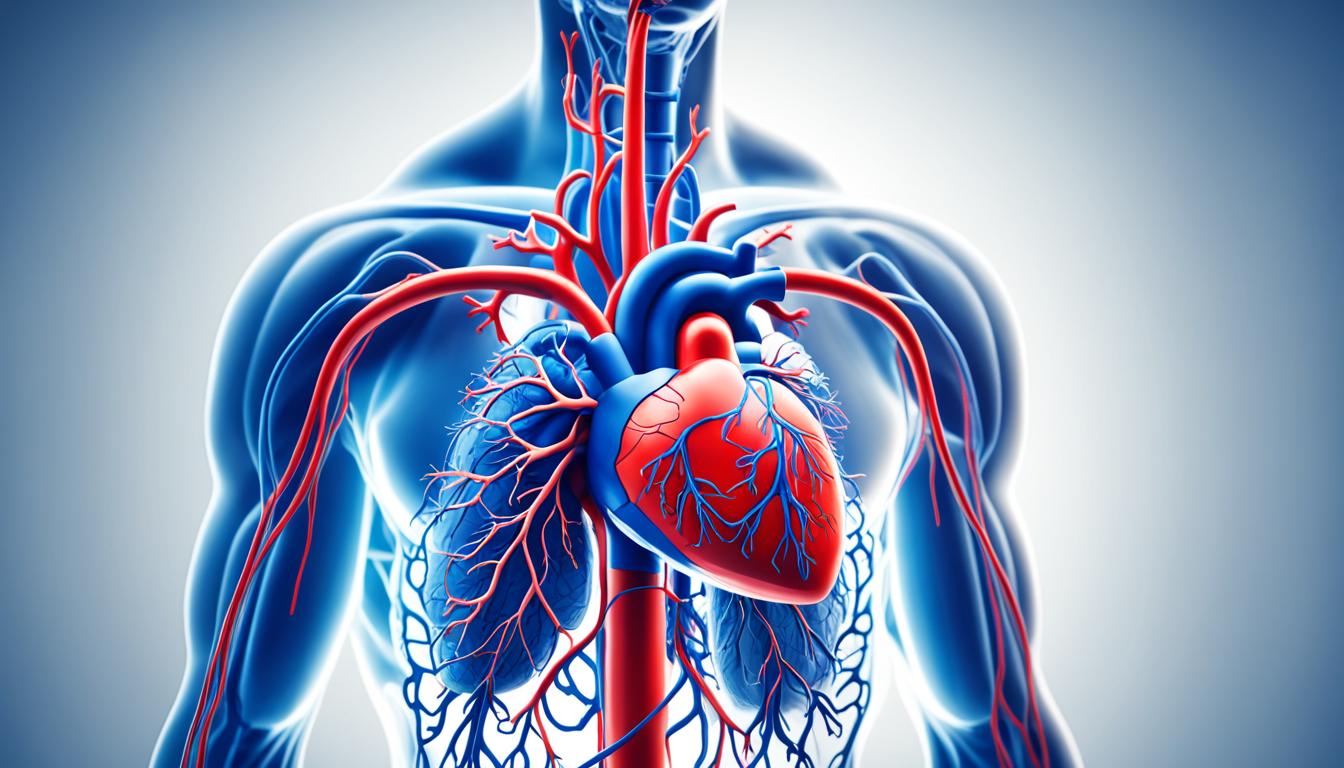Eisenmenger syndrome is a health issue that comes from birth heart problems. Specifically, it happens with ventricular or atrial septal defects. It causes high blood pressure in the lungs. This makes less blood go to the lungs, which means the blood doesn’t get enough oxygen. This makes the skin and mouth look blue. People with this syndrome feel like they can’t breathe, get tired easily, and feel chest pain. Without treatment, it can cause the heart to fail and lead to other serious problems. Doctors use tests like echocardiography or cardiac catheterization to figure out if you have it. If you do, they’ll give you medicine to help your heart work better and to lower your blood pressure. They’ll also suggest changes to your lifestyle, and sometimes you might need surgery. Lately, scientists have been studying if using stem cells can help. It’s an exciting possibility that could make life better for people with Eisenmenger syndrome.
Key Takeaways:
- Eisenmenger syndrome comes from heart issues at birth.
- It causes high blood pressure in the lungs and a blue skin color.
- People might feel like they can’t breathe, get tired, and have chest pain.
- If not treated, it can lead to heart failure and other problems.
- Doctors use tests like echocardiography to diagnose it.
- The treatment includes medicine, lifestyle changes, and maybe surgery.
- There’s hope in stem cell therapy being a good treatment.
Symptoms and Complications of Eisenmenger Syndrome
Eisenmenger syndrome shows many symptoms and can have bad effects if not treated. It’s vital to know the signs and possible problems to handle the condition well.
Symptoms of Eisenmenger Syndrome
The signs of Eisenmenger syndrome are not the same for everyone. But some signals tell if someone has it. These may include:
- Shortness of breath: People with Eisenmenger syndrome may find it hard to breathe, especially when active.
- Fatigue: Being tired and lacking energy is common in this syndrome.
- Chest pain: Some feel chest pain during activity or while resting.
- Cyanosis: Skin and lips turning blue because of low oxygen in the blood are key signs too.
The strength of these symptoms varies, depending on the heart problem and lung pressure level.
Complications of Eisenmenger Syndrome
Untreated Eisenmenger syndrome may lead to several issues, such as:
- Heart failure: The heart may not pump blood well, which leads to fluid build-up, tiredness, and struggle with daily tasks.
- Arrhythmias: Bad blood flow can cause the heart to beat irregularly, known as arrhythmias.
- Stroke: Less blood to the brain can cause stroke, which interrupts brain blood supply.
- Other complications: This syndrome can also raise infection, blood clot, and lung problem chances.
Quick diagnosis and management are crucial to avoiding or reducing these complications and improve life quality for those with this syndrome.
| Symptoms | Complications |
|---|---|
| Shortness of breath | Heart failure |
| Fatigue | Arrhythmias |
| Chest pain | Stroke |
| Cyanosis | Other complications (blood clots, infections, respiratory problems) |
Causes and Diagnosis of Eisenmenger Syndrome
Eisenmenger syndrome is a serious heart condition linked to birth defects in the heart. It mostly happens when there are holes between the heart’s sections. This lets blood mix where it shouldn’t, putting too much pressure on the arteries in the lungs.
The exact reasons behind Eisenmenger are still unclear. But, it seems a mix of genes and the surroundings plays a role. Some genetic changes might make heart defects more likely. Things like a mother’s exposure to certain drugs or illnesses during pregnancy might also increase the risk.
Doctors diagnose Eisenmenger by checking your health past, doing a physical exam, and running tests. They often start with an echocardiogram. This is a safe test that uses sound waves to show the heart’s shape and how it’s working. It can find those troublesome heart defects and tell how bad the lung artery pressure is.
For a full diagnosis, other tests might also be done. Like cardiac catheterization, where a thin tube is put into the heart to measure its pressures. Or pulmonary function tests to check how well your lungs are working.
Echocardiography is key in finding out if someone has Eisenmenger. It gives clear pictures of the heart and vessels. This helps doctors see the heart defects and how serious the lung artery pressure problem is. Knowing this helps in picking the best treatment for the patient.
Stem Cell Therapy as a Treatment Option for Eisenmenger Syndrome
Stem cell therapy is a new hope for treating Eisenmenger syndrome. It uses stem cells to repair tissues and make the heart and blood vessels work better. This method helps make new, healthy cells, brings down swelling, and boosts blood flow. It promises to better the health and life quality of those with the syndrome.
Stem cell therapy aims to fix the main issues behind Eisenmenger syndrome. It focuses on fixing damaged tissues to help the heart work right and slow down the syndrome’s progress. This method is personalized and offers a different path from regular medicines for those who want it.
What’s more, this therapy uses the patient’s own cells to heal. Stem cell treatment with cells from the patient’s bone marrow or fat means a lower risk of the body rejecting them. This ensures safety and positive results for people with Eisenmenger syndrome.

